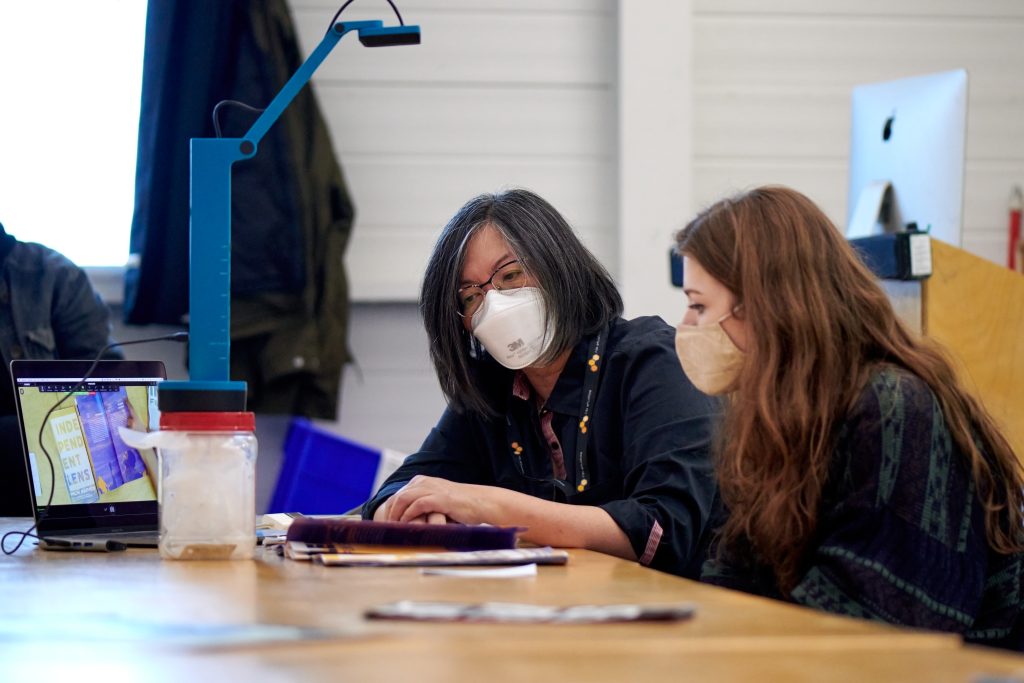Meet our Researchers
May Chung

May Chung holds a Bachelor of Arts and a Bachelor of Fine Arts in Visual Communication Design from the University of Alberta. May also received her Master of Graphic Design from North Carolina State University. She is a graphic designer with a background in information and exhibit design for corporations, government, and educational institutions. She was the Graphics Coordinator at Dow Chemical Company for its Canadian operations, taught at Grant MacEwan College, and created interpretive exhibits for Parks Canada and EXPO’86. Her work has been published and exhibited in Canada and the United States.
May explains that designers have adapted with the changing times and advances in technology. “Design makes content for people who are living in the world” says May. “Everything you see in front of you has been designed”. At the foundation of her work in Typography, May says designers aim to put an image and text together to encourage someone to do something. Essentially, designers endeavor to present information appropriately by looking at the big picture (audience and context) and working out the best way to do so.
From traditional media to digital media and everything in between, May has worked with and for over 72 different companies during the span of her career. This includes numerous collaborative community projects that have been done in design studios with students, including the Multicultural Association of Nova Scotia, Black Cultural Society for Nova Scotia, Nova Scotia Human Rights, Nova Scotia Advisory Council for the Status of Women, The Alexander Graham Bell Museum Association, and many more.
May was involved in communication support, design and branding for a new cloud-based responsible gambling solution developed by Focal Research Consultants, a local Halifax company. The ALeRT Bettor Protection System uses ‘big’ gaming data from an operators system to identify at-risk play patterns so staff can provide assistance to prevent and reduce gambling harm. Glen Hougan, Associate Professor in the Department of Design at NSCAD, reviewed their software and documents and advised on design changes prior to an international trial. He assessed the usability of the software during the trial and identified opportunities to improve the design, organization, user experience, and then tested with users. May also assisted in developing the user interface of the software. The ALeRT System was launched in over 100 locations in three different countries and shortlisted for a Gambling Compliance Global Regulatory Award.
Students are an integral part of May’s work. For example, May worked with an eco-friendly paint product company with her entire design class. Five strategy and research reports were provided to the company that outlined the necessary research to develop concepts for a logo and branding. The students worked on the identity of the business and developed the branded content by creating business cards, logos, and other design materials. Recently, May’s students worked with Eyeread, a digital literacy company based in Dartmouth, Nova Scotia, to develop digital care packages for Squiggle Park which help children aged 11 to 13 understand and feel part of helping to limit the spread of COVID-19. The students designed various interactive activities that can help children express how they are feeling during the COVID-19 pandemic. Check out the student projects here.
May says student engagement with industry is an important part of “crossing the bridge” from student to professional. These opportunities allow students to receive feedback from partners from different professions and fields. While these opportunities are undoubtedly crucial in developing the expertise of the student designer, May says it can also be a valuable learning opportunity for industry professionals. Through working with designers, companies learn to provide enough information for designers to work with, including the target audience, what problem the partner is really trying to solve, and the issues they are currently facing in their operations.
With a passion for working with industry partners to solve problems locally, May says she is interested in collaborating with partners working to address the climate crisis. She explains that every field has a need for designers, and it’s about connecting with the right people who are open to tackling problems together and finding different solutions.
